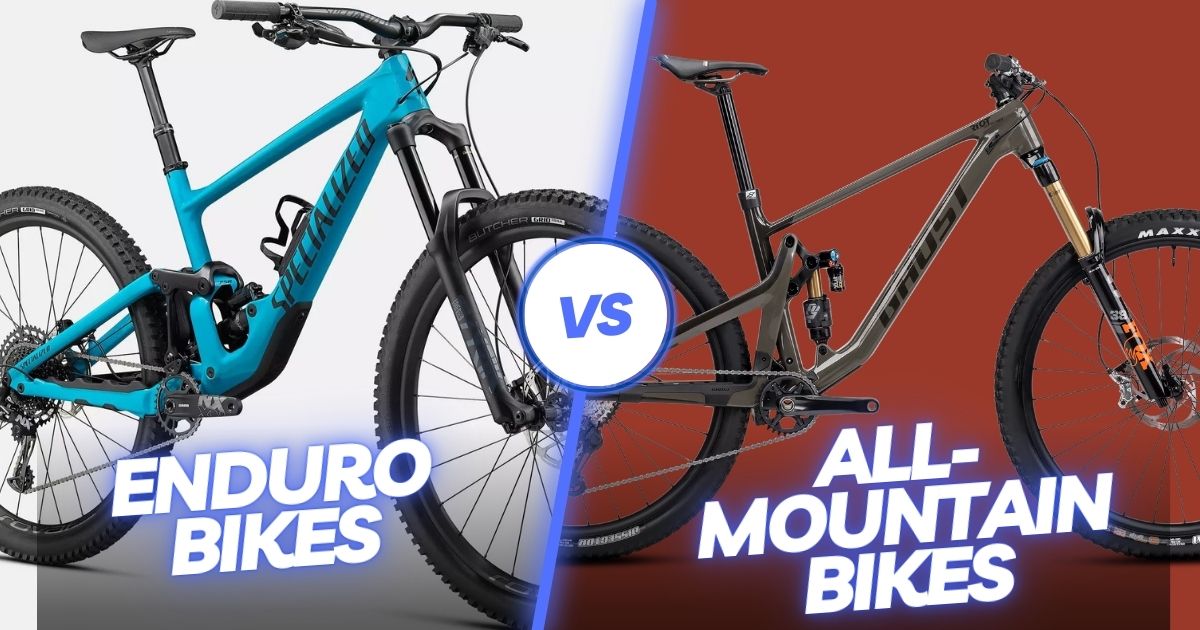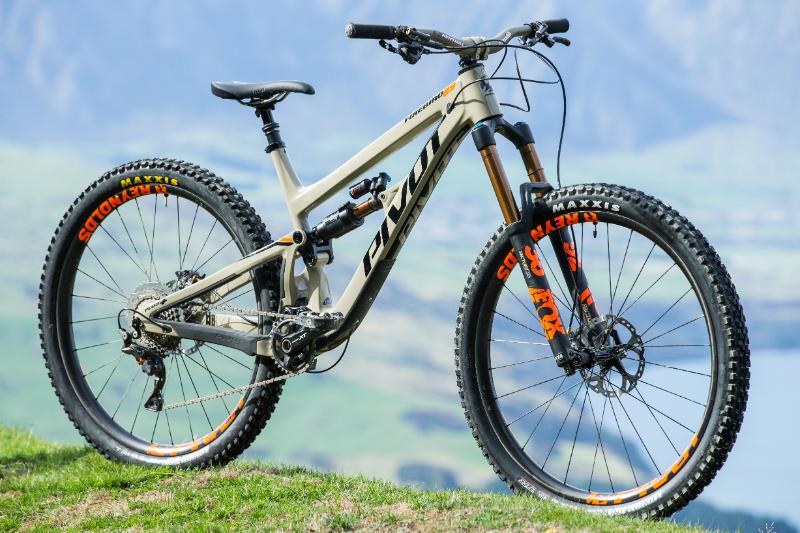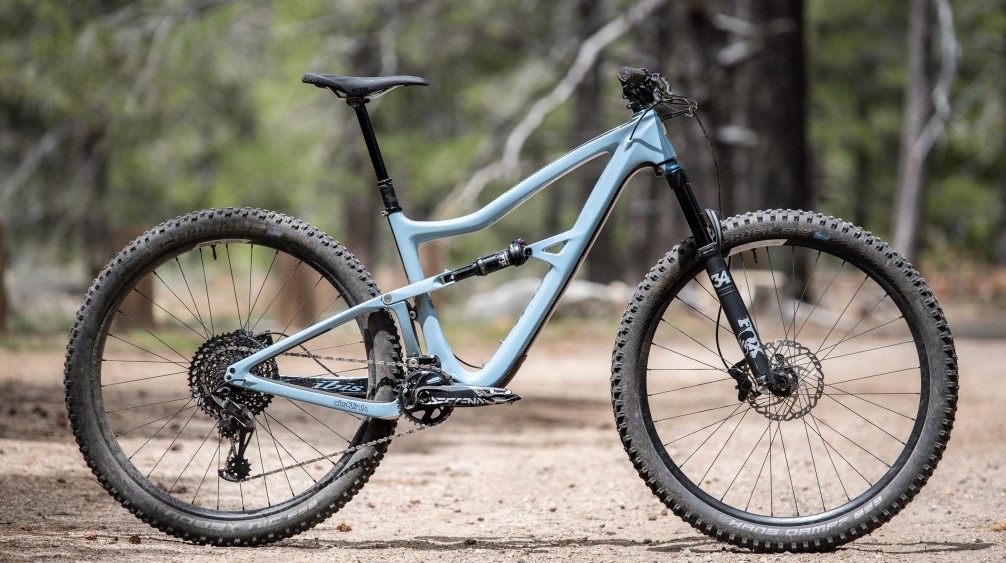For mountain biking aficionados, the dilemma of choosing between Enduro vs All Mountain bikes is really key. As you traverse off-road terrains, understanding the unique characteristics and functions of each bike type is super important. This guide will illuminate the key differences between these two titans of the mountain biking world, making sure your decision aligns with your riding style, preferences, and the adventures that await on the trails.
What are Enduro Bikes?
Enduro bikes, a prevalent genre within the mountain biking (MTB) community, are engineered for the adrenaline-pumping world of competitive cycling. They are recognized for their extended suspension travel, typically ranging from 140mm to 180mm, robust frames, and powerful braking systems. This combination is ideal for cyclists who revel in descending challenging, rocky mountains and tackling steep, technical trails.
The essence of an Enduro bike lies in its design and structure, carefully made to endure the harshest of terrains and conquer daunting descents. The longer suspension system is a key feature, providing exceptional control, traction, and comfort on rugged and uneven landscapes. This makes Enduro bikes a top choice for navigating downhill courses and technical sections with confidence and ease.
In the current market, the popularity of Enduro bikes has led to an array of options from reputable manufacturers. Brands like Norco, Yeti, Santa Cruz, and Evil stand out with their impressive portfolio of robust and durable MTBs. Each brand offers unique features, for the specific needs and preferences of downhill enthusiasts.
What Are All-Mountain Bikes?
All-mountain bikes represent the epitome of versatility in the MTB world. Unlike Enduro bikes, which are specifically tailored for downhill domination, all-mountain bikes are designed to excel across all terrains, making them a true jack-of-all-trades.
These bikes often draw comparisons to trail bikes, but they set themselves apart with a full suspension system, typically ranging from 130mm to 150mm, and enhanced power, especially super important for climbing. This design ensures that all-mountain bikes remain robust and capable, even on the most challenging ascents.
One of the defining traits of all-mountain bikes is their relative lightness, with weights ranging between 10kg to 14kg. This makes them not only efficient climbers but also suitable for extended tours or long-distance rides. They offer a balance between uphill agility and downhill performance, capable of handling drops and jumps with ease. This versatility makes all-mountain bikes a popular choice for riders who seek a bike that can adapt to a wide range of MTB adventures and course types.
Understanding the Differences
When comparing Enduro and All-Mountain bikes, it’s super important to delve into the nuances of their geometry, design, suspension, components, and overall purpose. These factors collectively influence the riding experience and suitability for various terrains.
| Aspect | Enduro Bikes | All-Mountain Bikes |
|---|---|---|
| Geometry and Design | Slacker head tube angle, longer reach, lower bottom bracket for downhill stability. | Slightly steeper head tube angle, shorter reach, higher bottom bracket for balanced climbing and descending. |
| Suspension | Longer travel suspension (160mm – 180mm forks, 160mm – 170mm rear shocks) for superior bump absorption. | Less travel (140mm – 150mm forks and rear shocks) prioritizing pedaling efficiency and moderate technical control. |
| Components | Robust wheels, aggressive tread tires, powerful brakes for downhill performance. | Lighter components, tires balancing grip and rolling resistance, effective brakes. |
| Weight and Efficiency | Heavier, optimized for downhill; less efficient on climbs but stable and confident on descents. | Lighter, balanced for both uphill and downhill; better climbing efficiency and technical terrain handling. |
| Purpose and Riding Experience | Ideal for downhill enthusiasts, enduro racing; less pedaling effort on descents, challenging for extended climbs. | Versatile for both uphill and downhill; suitable for trail riding, touring, bikepacking; agile across various terrains. |
Geometry and Design
- Enduro: Designed for downhill prowess, Enduro bikes feature a slacker head tube angle, longer reach, and a lower bottom bracket. This geometry enhances stability and confidence at high speeds and on technical descents, making them ideal for aggressive downhill riding.
- All-Mountain: These bikes strike a delicate balance between climbing and descending. With a slightly steeper head tube angle, shorter reach, and higher bottom bracket compared to Enduro bikes, All-Mountain bikes offer efficient climbing and nimble handling, suitable for diverse terrains.
Suspension
- Enduro: Enduro bikes come with longer travel suspension forks (160mm – 180mm) and rear shocks (160mm – 170mm), providing exceptional bump absorption and control on rough trails and big drops.
- All-Mountain: These bikes have slightly less suspension travel (140mm – 150mm for both forks and rear shocks), focusing on pedaling efficiency while still offering adequate control and traction for moderate technical sections.
Components
- Enduro: These bikes are equipped with durable components, including robust wheels, tires with aggressive tread patterns, and powerful brakes, for the demands of downhill riding.
- All-Mountain: Prioritizing versatility, All-Mountain bikes feature lighter components, tires that balance grip and rolling resistance, and brakes that are effective yet slightly less powerful than those on Enduro bikes.
Weight and Efficiency
- Enduro: Generally heavier, Enduro bikes are optimized for downhill performance, which can impact their climbing efficiency but enhances stability and confidence on descents.
- All-Mountain: These bikes are lighter, aiming to strike a balance between uphill and downhill performance, thereby offering better climbing efficiency and sufficient robustness for technical terrains.
Purpose and Riding Experience
- Enduro Bikes: They excel in fast and powerful descents, making them ideal for downhill enthusiasts and riders who engage in enduro racing or aggressive riding styles. The slack geometry and robust suspension facilitate less pedaling effort on descents but may pose challenges for extended climbs due to their weight.
- All-Mountain Bikes: These are versatile, all-around bikes suitable for both uphill and downhill riding, perfect for trail riding, touring, and bikepacking. They offer efficient climbing and agile handling across various terrains. However, handling challenging descents might require more skill and effort compared to an Enduro bike.
Choosing the Right Bike: Your Needs Come First
Selecting the ideal mountain bike is a personal journey, heavily influenced by your individual riding style, terrain preferences, and fitness level. To make the most informed decision, consider these super important factors:
- Primary Riding Style: Reflect on whether you prioritize downhill performance or if you prefer a balance between climbing and descending. If the thrill of downhill is your main draw, an Enduro bike might be your match. However, if you seek versatility in handling both ascents and descents, an All-Mountain bike could be your perfect companion.
- Typical Terrain: Assess the kind of trails you usually ride on. Are they primarily technical descents, or do they include a mix of climbs and downhills? Your choice of bike should align with the terrain you most frequently encounter.
- Fitness Level: Consider your physical capabilities and riding preferences. If you enjoy comfortable, long rides, an All-Mountain bike’s versatility and lighter weight might be more suitable. Conversely, if pushing limits on technical descents excites you, the robust nature of an Enduro bike could be more appealing.
- Budget: Establish a realistic budget before exploring different options. Both Enduro and All-Mountain bikes come in various price ranges, so it’s important to find a bike that not only meets your riding needs but also fits your financial constraints.
By carefully evaluating these factors, you can confidently choose the mountain bike that not only elevates your riding experience but also empowers you to tackle any trail with assurance and enthusiasm.
Enduro and All-Mountain bikes stand out as exceptional choices for mountain biking enthusiasts, each for specific riding styles and preferences. Understanding their distinct characteristics is key to making a well-informed decision that enhances your trail adventures. The most suitable mountain bike for you is the one that aligns with your personal needs, encourages you to push your boundaries, and inspires you to explore new paths and challenges on two wheels. Dive deeper into the world of mountain biking with insights and expert advice from the Refried Cycles Blog, your go-to resource for all things cycling. Embrace the journey and let your chosen bike lead you to unforgettable experiences and thrilling new trails!









